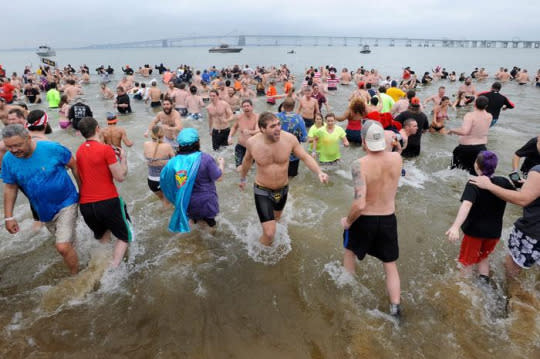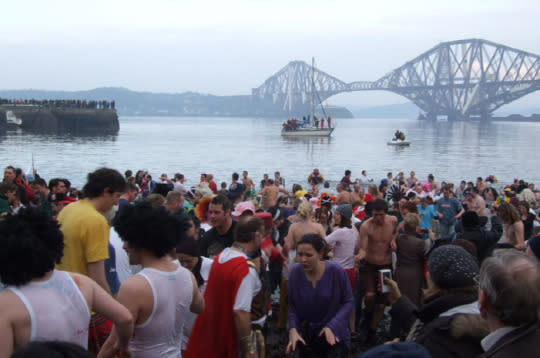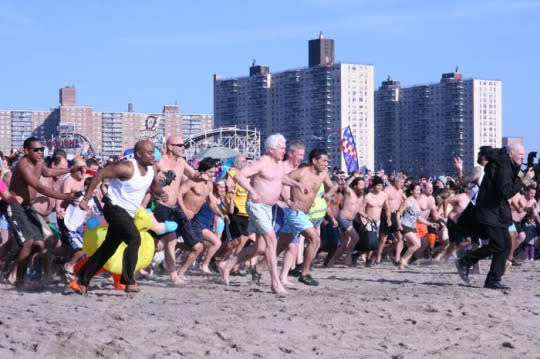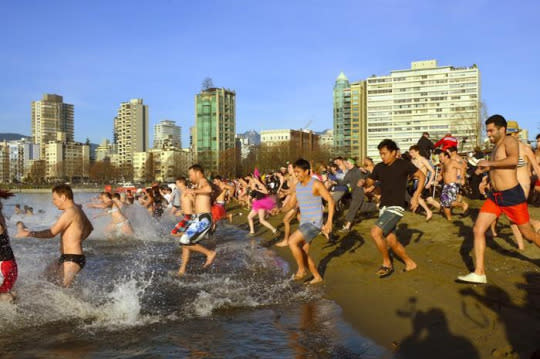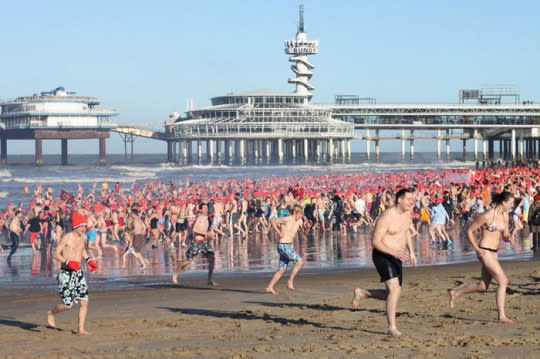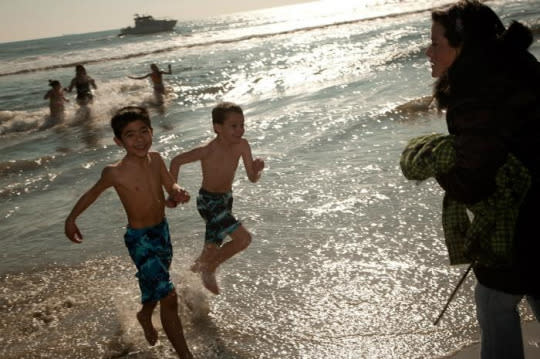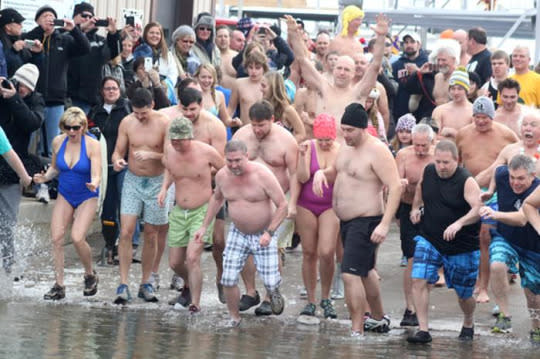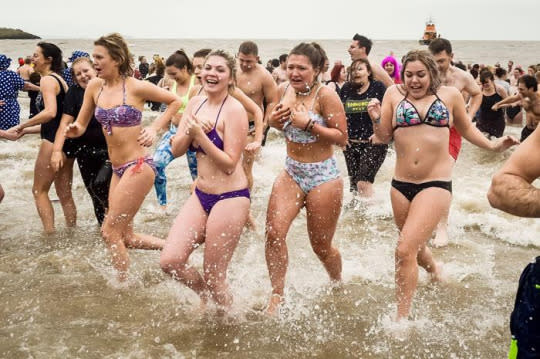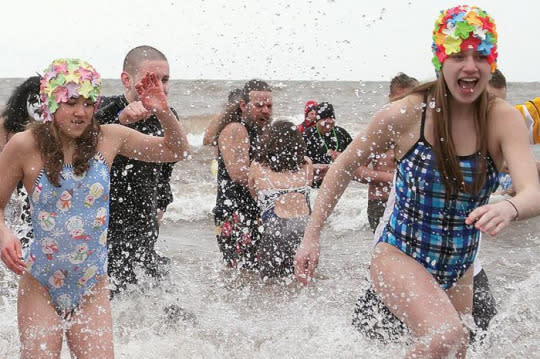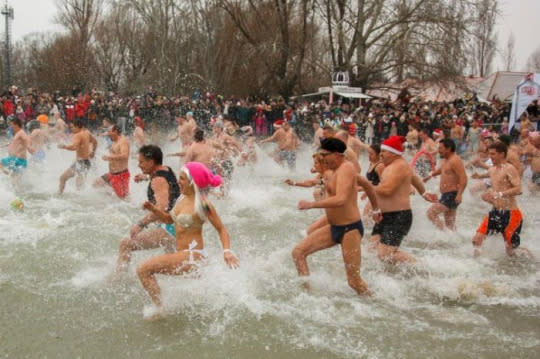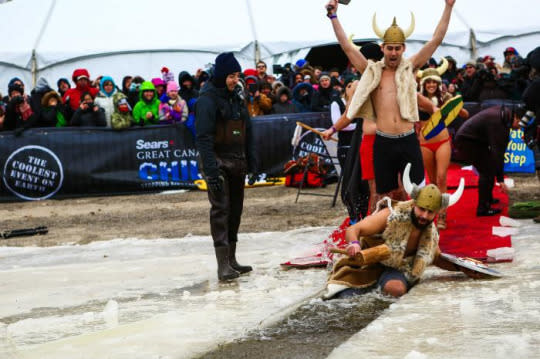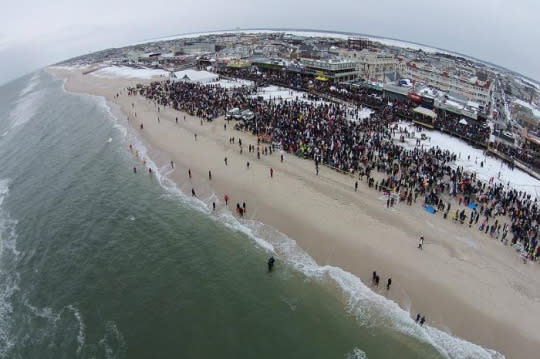World’s Coolest Polar Bear Plunges
People usually associate Polar Bear Swims with celebrating the New Year and they would be right. In many countries plunging into ice cold waters has on January 1 (or a few days before or after) has been a tradition for more than a century. The first recorded Polar Bear Swim took place in Boston 1904. Vancouver’s annual Polar Bear Swim Club, for example, has been active since 1920.
Most of the time the event is organized for charity and other times it is a religious ritual. Christian Orthodox countries celebrate Epiphany, the birth and baptism of Jesus. A silver cross is thrown into a river and gutsy people swim to retrieve it. This is called the Blessing of the Water and symbolizes Jesus’ baptism in River Jordan. Many Polar Bear Plunges across the U.S. are schedules around the SuperBowl.
Related: San Francisco for the Super Bowl: Your Guide to Everything
Whatever the reason, thousands of people all over the world take on the challenge. Judging by the numbers, swimming in icy waters is more popular in Europe than in North America. Vancouver usually attracts between 1,000 and 2,000 swimmers (a record of 2,500 in 2014) every year while The Netherlands, in comparison, has about 10,000 at Scheveningen, the country’s main beach resort town, alone. In in Biarritz, Southwestern France, people celebrate with champagne, which they drink while still in the water.
The largest polar bear swim in the U.S. is in Sandy Point State Park in Maryland – the Plungapalooza. Its aim is to raise funds for the Special Olympics. The biggest swim was in 2008 when 12,000 showed up.
While these plunges are a fun way to spend the day with friends and strangers, the daring swims are not meant for everybody. They are called “Polar Bear Swims” for a reason. A person simply doesn’t have enough fat and fur to protect the body from the freezing temperatures. The icy waters are a shock to the body. People can start to hyperventilate, heart rate and blood pressure can spike. If you’re gasping for air and get ice cold water into your lungs, you can actually drown. Other risks include “diving reflex” when the body breathes slower and the heart rate slows down (in order to save oxygen), arrhythmia, hypothermia.
Related: Top Spots to Escape the Cold for President’s Day and Beyond
Polar Bear swims are not all bad; they have a few health benefits. A dunk in the cold water increases blood flow to the organs and helps exfoliate the skin. The shock from the quick change in temperature is considered a mild stressor and it activates the immune system. The levels of dopamine, serotonin and endorphins increase.
People with heart problems, smokers, who are out of shape, and those who have been drinking the night before the swim are advised not to take part in Polar Bear plunges. Taking part can be dangerous but watching it or reading about is totally risk-free.
Let Yahoo Travel inspire you every day. Hang out with us on Facebook, Twitter, Instagram, and Pinterest.
More from The Active Times:
